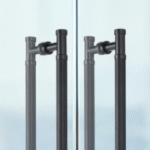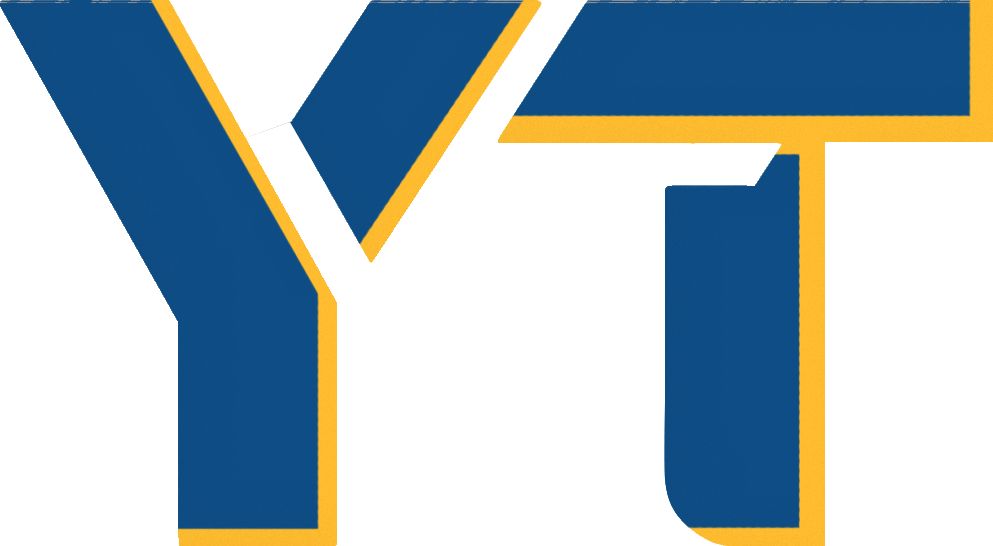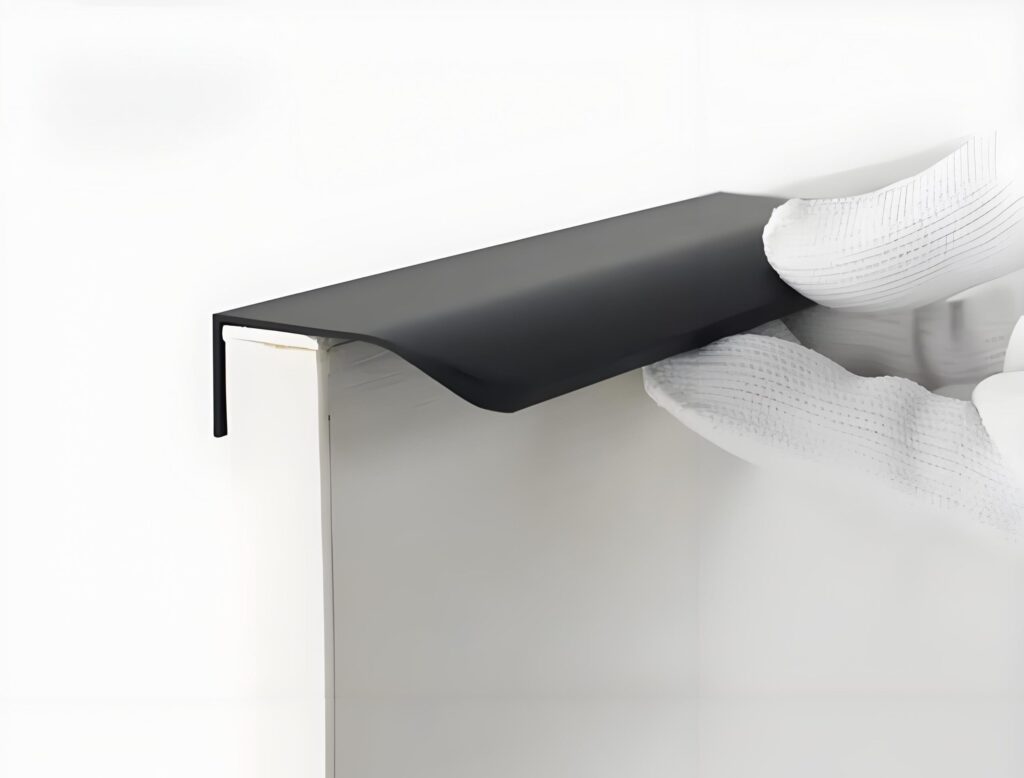
What is an embedded pull handle?
Handles that stick out can cause bumps, scratches, or catch on clothes. Many want something sleek and safe.
An embedded pull handle is built flush into the cabinet or drawer surface, creating a clean look and preventing accidents.

When I first saw embedded pull handles, I was impressed by their elegant simplicity. Unlike traditional handles that project outward, these handles sit inside a groove or recess in the cabinet front. This style fits modern home trends perfectly as it keeps surfaces smooth and tidy. It also means less chance of children or adults bumping into or catching on handles. Installation is straightforward, making embedded pulls a popular choice for contemporary furniture and kitchen designs wanting that minimal, clean-lined effect.
What is an integrated pull?
An integrated pull is similar to an embedded pull but often describes handles cleverly designed as part of the cabinet structure itself.
Integrated pulls are built into the cabinet panel, allowing users to open drawers or doors by gripping the edge or a recessed channel without separate hardware.

In my experience, integrated pulls create a seamless look because the handle is not a separate piece but part of the furniture design. This design eliminates the need for added fixtures, which helps keep surfaces flush and reduces cleaning. They suit minimalistic designs and improve safety by avoiding any protrusions. Compared with other concealed handles, integrated pulls require precise manufacturing but offer unmatched style and ease of use, especially on kitchen cabinets or wardrobes.
What is the difference between a pull handle and a lever handle?
Though both help open doors or drawers, pull handles and lever handles serve different functions and designs.
Pull handles are grip-oriented handles that you pull directly, often mounted horizontally or vertically, while lever handles operate by pressing down or up and are common on doors.
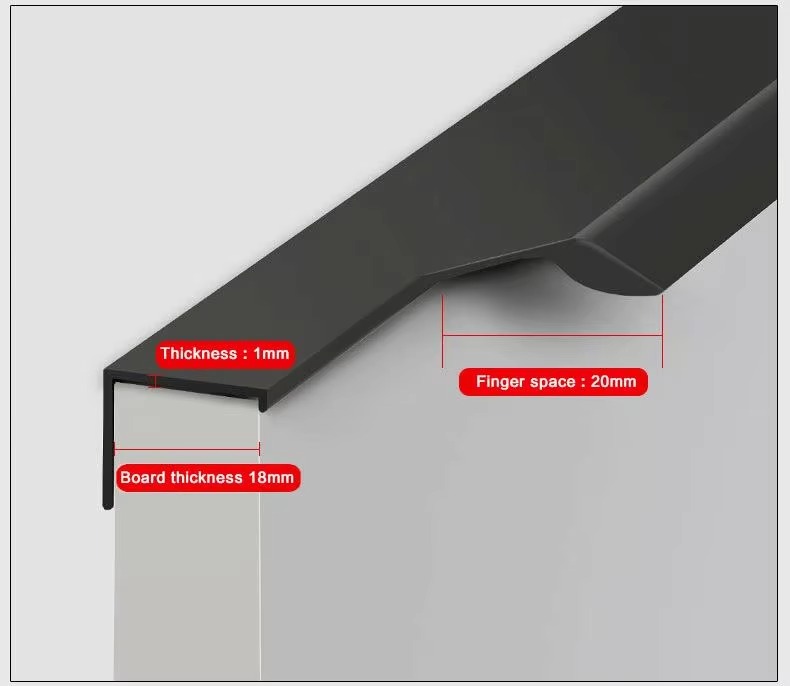
Looking at their use, pull handles are best for furniture pieces like cabinets and drawers where you need a firm, simple grip. Lever handles are designed more for swinging doors, offering easier access through press or push motion, useful especially for users with limited strength. Pull handles can be embedded or protruding, while lever handles almost always stick out. Knowing the difference helps when deciding hardware based on function and user needs.
| Feature | Pull Handle | Lever Handle |
|---|---|---|
| Use | Pull doors or drawers | Operate swinging doors |
| Operation | Grip and pull | Push or press down |
| Design | Horizontal or vertical mounts | Usually horizontal with lever |
| Protrusion | Sometimes embedded or protruding | Always protrudes |
What are the different types of handles on cabinets?
Cabinet handles come in varied styles to suit design needs and user convenience.
Common types include knob handles, bar pulls, embedded pulls, integrated pulls, and finger pulls, each offering different looks and user experiences.
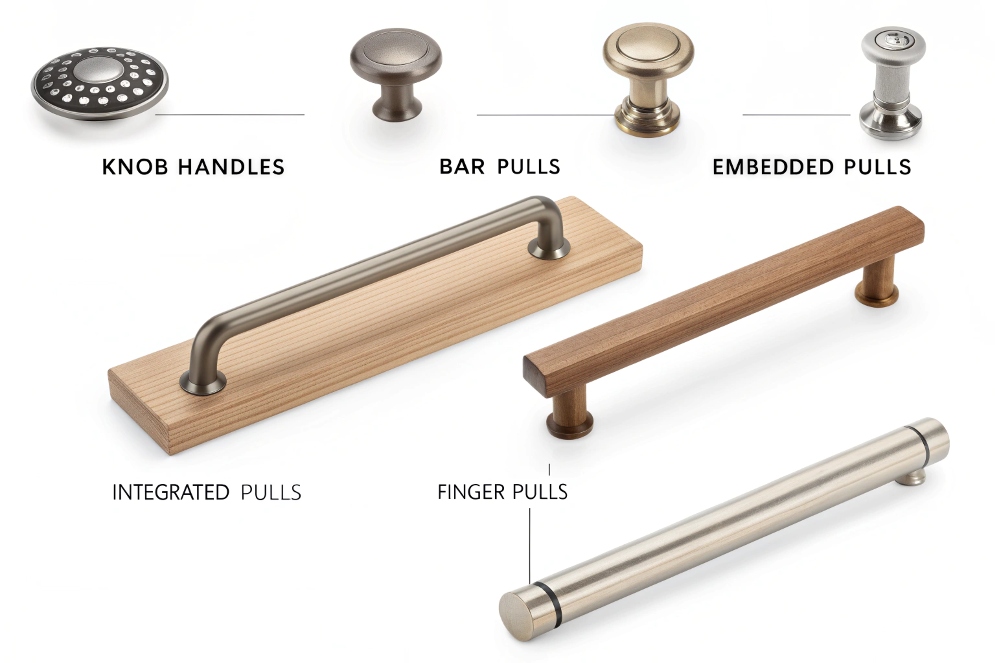
From personal experience, choosing the right handle type depends on safety, style, and function. Knobs are simple and classic but protrude, risking bumps. Bar pulls offer strong grips but stick out more. Embedded and integrated pulls provide smooth, safe surfaces. Finger pulls are small recessed grooves ideal for minimal designs. The right handle can transform both the appearance and usability of cabinets. Understanding these types helps select hardware that matches your home’s style and practical needs.
| Type | Description | Pros | Cons |
|---|---|---|---|
| Knob Handle | A single round or shaped grip | Easy to use, classic style | Protrudes, can catch clothes |
| Bar Pull | Long bar for grip, mounted horizontally or vertically | Strong grip, durable | Sticks out, may bump users |
| Embedded Pull | Flush with surface, inside a groove | Sleek look, safer | Requires precise installation |
| Integrated Pull | Built into cabinet design without added hardware | Seamless look, very safe | Complex manufacturing |
| Finger Pull | Small recessed groove to grip | Minimalist, very low profile | Limited grip size |
What is an inset handle?
An inset handle refers to a handle set inside the cabinet door or drawer, often fully recessed.
Inset handles allow you to open cabinets by placing fingers inside the recessed area, creating a flush and tidy front without protruding parts.
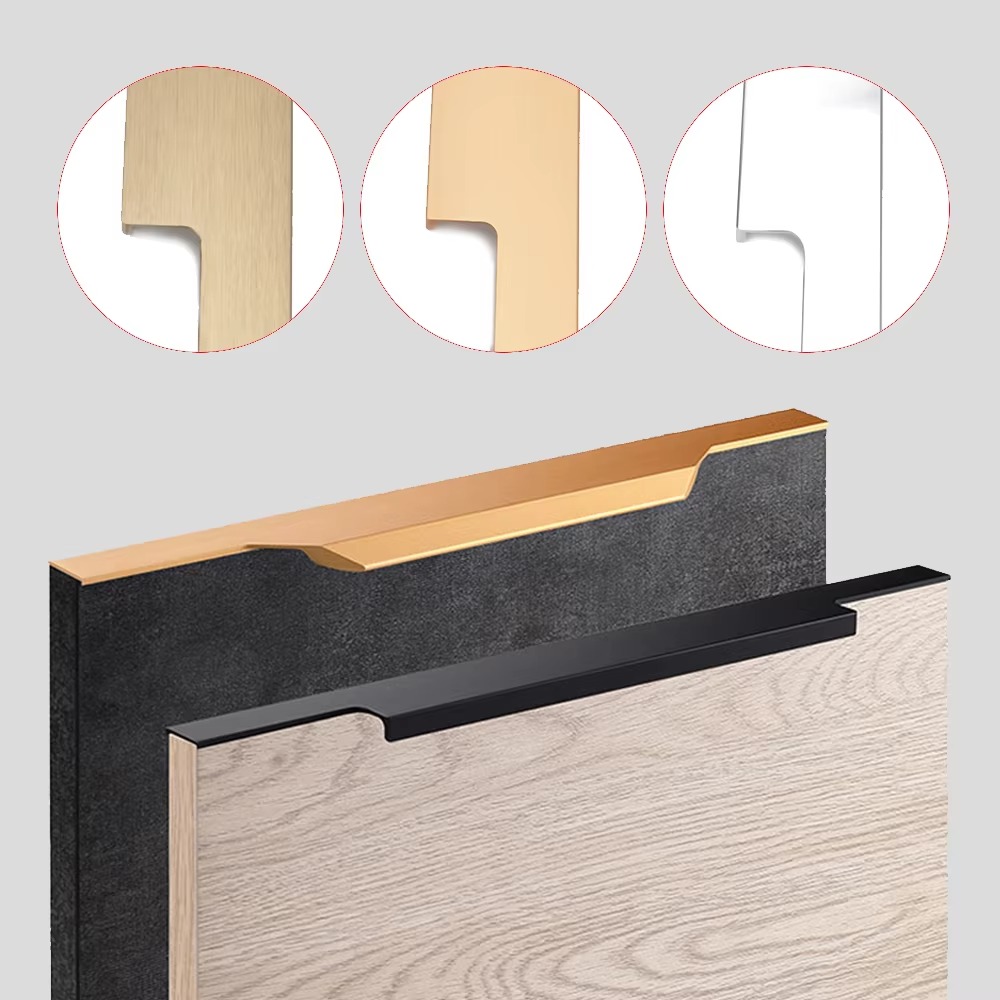
From what I’ve seen, inset handles are popular in modern and minimalist furniture for their neat appearance. They provide easy access without spoiling the flat surface with bumps or pulls sticking out. This style is especially useful in small spaces where protruding handles might snag or bump walls and other objects. Installing inset handles requires precision to ensure smooth edges that feel comfortable to grip. They balance style and function well, often paired with concealed or push-to-open mechanisms for a clean countertop or cabinet look.
Conclusion
Embedded and inset pull handles boost cabinet safety and style by keeping surfaces flush and minimizing hazards while matching modern design trends.


